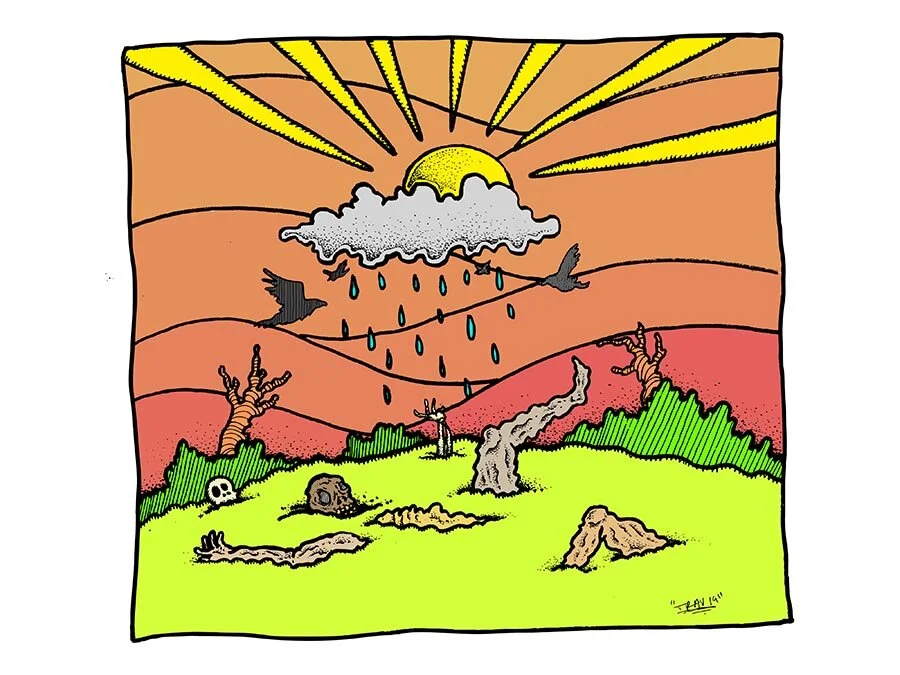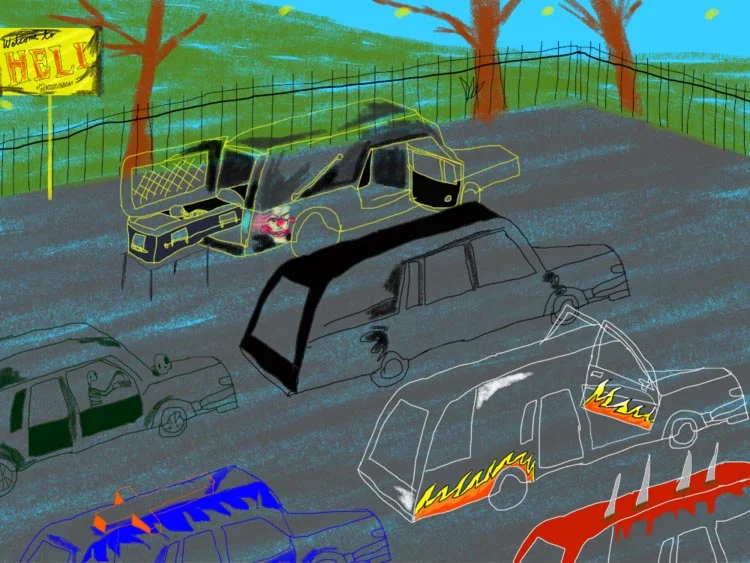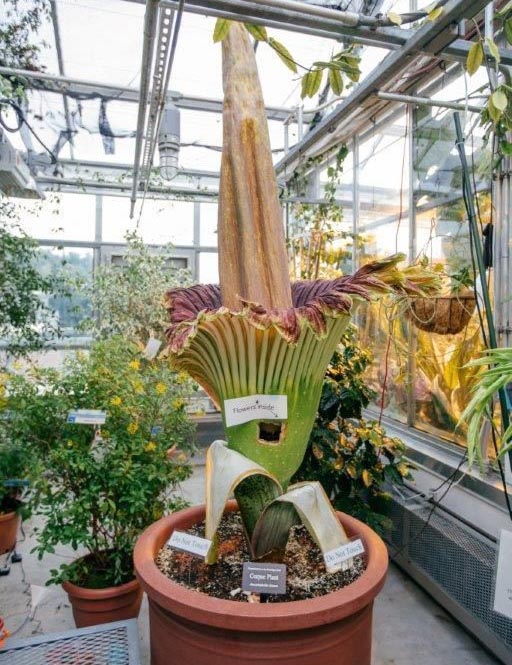7 Weird Facts About Body Farms
By studying the decomposition of corpses, forensic scientists can uncover secrets that are normally taken to the grave.
By Jillian Pretzel
Art: Trav
To most, the idea of wandering around an open field littered with rotting corpses sounds like a nightmare. But to forensic scientists, that’s just another day at the office.
What is a Body Farm?
Outdoor forensic anthropology research laboratories, commonly called “body farms,” are where forensic anthropologists study the decay of human remains. These facilities not only work to improve our understanding of human decomposition, but also to assist law enforcement in their efforts to locate, recover, and identify human remains.
If you’ve seen any true crime shows, you know how important forensic science can be to solving murders. Forensic anthropologists often provide voices for the deceased, uncovering clues from remains that can often crack the case. Their research can prove where the body has been (pre- and postmortem), how long it’s been there, how the person died, and much more.
While this might be creepy to some, forensic anthropologists and law enforcement know the good that can come out of these research facilities. They not only help inform the medical and scientific communities, but they can be instrumental in solving murder cases and serving justice. Put another way, they help uncover secrets that are normally taken to the grave.
Here are seven facts about body farms you probably didn’t know.
1. Their name came from a book
Technically these facilities — which have been around since 1981 — are called outdoor forensic anthropology research laboratories, human decomposition facilities, or outdoor labs. The phrase “body farms” only entered the picture after author Patricia Cornwell published the forensic novel The Body Farm in 1994. The name stuck and is still used in the media.
Scientists generally prefer to stick with the more official titles, though. Still, they have fun coming up with names as the Australian Facility for Taphonomic Experimental Research — a.k.a. AFTER — proves.
2. Researchers really do get “used to the smell”
In a field of bodies, you’d expect the facility to smell like…death. Well, surprise, surprise, it does. Corpses emit some pretty strong odors as they decompose, so you can imagine the stench that comes with rows and rows of human remains. Fortunately, you stop noticing it after a while.
That’s what leading forensic scientist Joan Bytheway, who works at the AFTER body farm in Australia, told 60 Minutes Australia in a 2017 interview. “After doing this for nine years,” she explained casually, “and, plus working cases prior to this, no, you just get used to it.”
3. Some crazy experiments go down at body farms
Because every crime is different, forensic scientists must be knowledgeable about corpses found in all kinds of situations. They need to know what kinds of decomposition to expect from a body in every environment so that investigators working on murder cases can know what happened to the body and how long it has been since its death. At body farms, researchers run a wide range of experiments that include encasing bodies in concrete, stashing them in trailers, covering them in plastic, and simply leaving them out in the open.
The Complex for Forensic Anthropology Research at Southern Illinois University is particularly well-known for its study on the effects of lawnmowers. After a lawnmower operator accidentally ran over two of their skeletons, the team made the best of it and published a study on the effects of lawn mowers on human remains.
4. Animals play a part in research
Researchers study the natural decomposition of corpses, but they also study the effects from the natural world — including animal scavengers.
While many research facilities purposely put their subjects in cages to protect them from animals, other subjects are left within scavengers’ reach. This helps researchers learn more about what remains look like after all kinds of creatures have had access to the body.
5. Bugs get studied, too
Forensic entomology is a specialized science that studies how insects react with dead bodies. It’s used most commonly to determine the subject’s time since death.
There are five stages of decomposition — fresh, putrefaction, fermentation, dry decay, and skeletonization — and each of those stages attracts different organisms. By collecting the insects and seeing where they are in their life-cycle, researchers can usually determine an accurate time of death.
Forensic scientists can also decipher where, geographically, the body has been by the examining bugs found on it.
6. There are only a few body farms in the world
Having facilities around the world can be particularly beneficial in learning more about how weather and temperate climates affect decomposition. But there’s surprisingly few body farms outside of the six in the U.S.
The oldest (and largest) one is at the University of Tennessee. There are also research facilities at Western Carolina University, Texas State University, Sam Houston State University, Southern Illinois University, and Colorado Mesa University.
The first international body farm opened in 2016 near Sydney, Australia. A year later, Amsterdam’s Academic Medical Centre (AMC) received a permit to open the first forensic research facility in Europe. It will differ from those in the U.S. and Australia as anthropologists will only study bodies that have been buried.
While there have also been efforts to build a forensic research facility in the United Kingdom, no official plans have been made yet.
7. You can donate your body for science
If you want to aid anthropologists in their research, you can do so once you die because most body farms accept donations. They are usually studied in an outdoor facility until they decompose completely. Then, after skeletonization, the bones are collected and cleaned, so they can be used for research or educational purposes.
But if that makes you uncomfortable, you could also donate, you know, cash.














Creative uses for ashes abound as people increasingly seek personalized memorials for their loved ones.